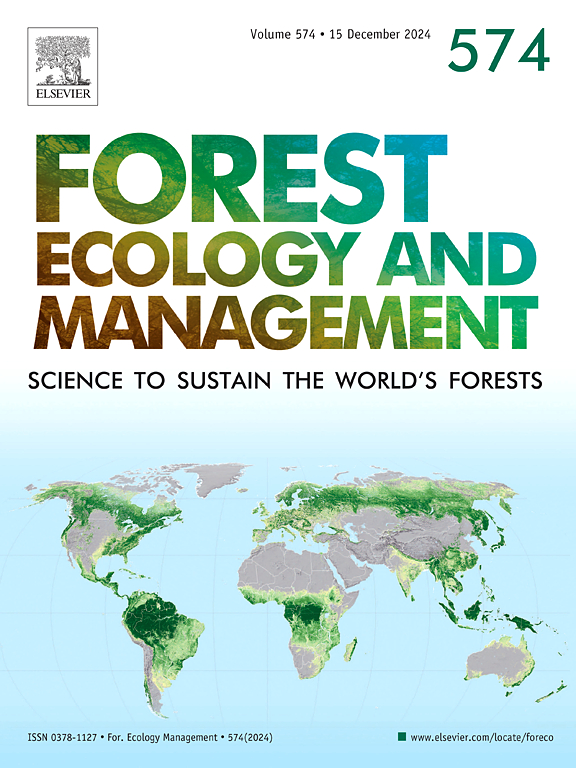Climate-driven increase in mistletoe infestation in Iberian pine forests
IF 3.7
2区 农林科学
Q1 FORESTRY
引用次数: 0
Abstract
Mistletoe is a common hemiparasitic plant in forest in Spain. However, more studies on mistletoe infestations are needed to determine the spatial and temporal patterns and to develop control and monitoring programmes for forest health. For this purpose, we used harmonised data from three existing forest damage networks in Spain, including ICP-Forest, from which only national data was taken, including climatic variables to model the distribution and to predict the degree of mistletoe infection using geostatistical techniques. Having selected the variables, the spatial models were evaluated using the area under the curve statistic to predict the distribution area (AUC=0.99) and one-out cross-validation to predict the degree of infection in areas with mistletoe presence. Overall, 87 % of the pine forest area is free of mistletoe. Within the affected distribution area, the Alpine region (23 %) has the highest percentage of area affected, followed by the Mediterranean region (14 %), with no records available in the Atlantic region. Regarding mistletoe abundance, the variation throughout the study period according to damage-degree class reveals a decrease of 18.2 % in “slight” class, a decrease of 2 % in “moderate” class, an increase of 15 % in “moderate-high” class and an increase of 5.2 % in “severe” class. Our results indicate that the incidence and severity of mistletoe infection are highly spatially concentrated and strongly related to climatic conditions, especially temperature and precipitation in previous years. Prediction maps showing the spatial patterns of mistletoe distribution can be useful for damage prevention and risk control.
求助全文
约1分钟内获得全文
求助全文
来源期刊

Forest Ecology and Management
农林科学-林学
CiteScore
7.50
自引率
10.80%
发文量
665
审稿时长
39 days
期刊介绍:
Forest Ecology and Management publishes scientific articles linking forest ecology with forest management, focusing on the application of biological, ecological and social knowledge to the management and conservation of plantations and natural forests. The scope of the journal includes all forest ecosystems of the world.
A peer-review process ensures the quality and international interest of the manuscripts accepted for publication. The journal encourages communication between scientists in disparate fields who share a common interest in ecology and forest management, bridging the gap between research workers and forest managers.
We encourage submission of papers that will have the strongest interest and value to the Journal''s international readership. Some key features of papers with strong interest include:
1. Clear connections between the ecology and management of forests;
2. Novel ideas or approaches to important challenges in forest ecology and management;
3. Studies that address a population of interest beyond the scale of single research sites, Three key points in the design of forest experiments, Forest Ecology and Management 255 (2008) 2022-2023);
4. Review Articles on timely, important topics. Authors are welcome to contact one of the editors to discuss the suitability of a potential review manuscript.
The Journal encourages proposals for special issues examining important areas of forest ecology and management. Potential guest editors should contact any of the Editors to begin discussions about topics, potential papers, and other details.
 求助内容:
求助内容: 应助结果提醒方式:
应助结果提醒方式:


